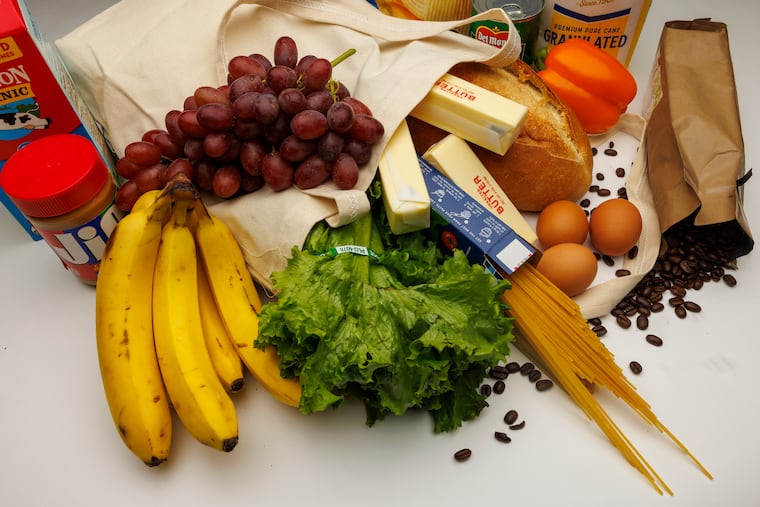Philadelphia has the nation’s highest grocery price hikes, report says
Philadelphians spent more than $400 more per year on groceries than Richmond, Va., shoppers.

A new report confirms what Philly-area shoppers have known for a long time: Grocery stores are getting expensive.
In the last 12 months, Pennsylvania had the largest average increase in grocery prices of any state. According to Consumer Affairs, the national consumer research and advocacy platform, prices in the state increased by 8.2% since last year — more than the nationwide average price increase of 5.3%.
The report doesn’t stop there, either. The Philadelphia region is the metro area with the highest average grocery price increase in the country. This comes at a time when prices for all goods in the region have risen in the last few years. The Inquirer recently reported that local grocery prices skyrocketed by 24% since 2020, according to the Consumer Price Index.
The state with the lowest average price increase, Colorado, saw grocery prices rise by only 2.9%. To put that into perspective, Pennsylvanian shoppers spent nearly $500 more per year on groceries than shoppers in Colorado, reports Consumer Affairs. Colorado shoppers even saw prices drop for certain goods, like grains, beans, and pasta.
Only 250 miles south of Philly is Richmond, Va., the metro area with the lowest average grocery price increase. Richmond shoppers spent $427 less than Philly-area shoppers for the same groceries. And while prices for premade grocery meals rose by 5% in Philly, they dropped by 2% in Richmond.
Metro areas that experienced the largest price increases over the last 12 months:
Philadelphia: 7.4%
Albany, N.Y.: 7.2%
Syracuse, N.Y.: 7.1%
Baltimore: 7%
Boston: 6.7%
Navigating the country’s grocery market with the highest price increases can be difficult. That’s why The Inquirer went grocery shopping across the city. Here are the cheapest grocery prices we could find.
Why does Philadelphia have the highest average grocery price increase in the U.S.?
Regional differences in grocery prices can be attributed to a variety of factors, like the operating costs of a given grocery store, how various grocers transport products to their stores, and the global supply chain, according to Consumer Affairs’ interviews with industry experts.
They also are subject to the rules of supply and demand. According to Consumer Affairs, salaries tend to be higher in Northeast metro areas, and there’s a higher concentration of people. More people with more money means that stores can charge higher prices. But, these densely populated areas also have more stores competing for business, which can balance prices.
A combination of these factors has resulted in Philadelphia’s grocery prices increasing, in some cases twice as fast as in other cities.
While Philadelphia had the highest average price increase in the U.S., rural areas in general have historically higher prices than other areas due to higher transportation costs of getting food to rural grocery stores and smaller populations with less money to spend on those goods. Consumer Affairs said these factors lead grocery stores in those areas to raise prices.